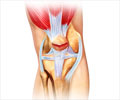A patient's history of falls is valuable in determining the future risk of fractures, say clinicians.

Fracture risk assessment tools, such as the FRAX(r) model, have been developed to allow clinicians to accurately assess the risk of fracture for a patient. The calculation can include information on known risk factors such as age, sex, smoking, alcohol, family history, and certain diseases, with or without bone density. However, not all risk assessment tools include data on whether the individual has previously fallen.
New data from the Hertfordshire Cohort, which is published in the journal Bone, have shown that when knowledge of fall history is used the clinician's ability to predict whether an individual will break a bone is further improved.
Dr Mark Edwards, Clinical Research Fellow at the MRC Lifecourse Epidemiology Unit, University of Southampton, who led the study, comments: "In a clinical setting, asking whether a patient has fallen is quick and easy. Nearly 60 per cent of all hospital admissions due to fractures in England are the result of a fall. Fracture prediction is extremely important to allow us to target treatments to those at greatest risk: assessing falls history provides us a further tool with which to do so."
During the study the participants' risk factors, including age, sex, height, weight, family history, smoking, alcohol, rheumatoid arthritis, and whether they had a previous fracture or fall, were assessed along with bone density. At follow up each individual was asked whether they had suffered a new fracture.
The investigators found that using risk factors, similar to those in the FRAX(r) model, showed a good level of fracture prediction. As expected, the addition of bone density further improved accuracy. However, when fall history was also added in, the model was augmented further especially in men in whom predictive capacity increased by six per cent. Furthermore, in over 80 per cent of men that had not fallen and did not subsequently fracture, the addition of this variable to the model correctly reduced their predicted fracture risk.
Advertisement
Source-ANI











